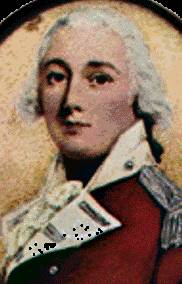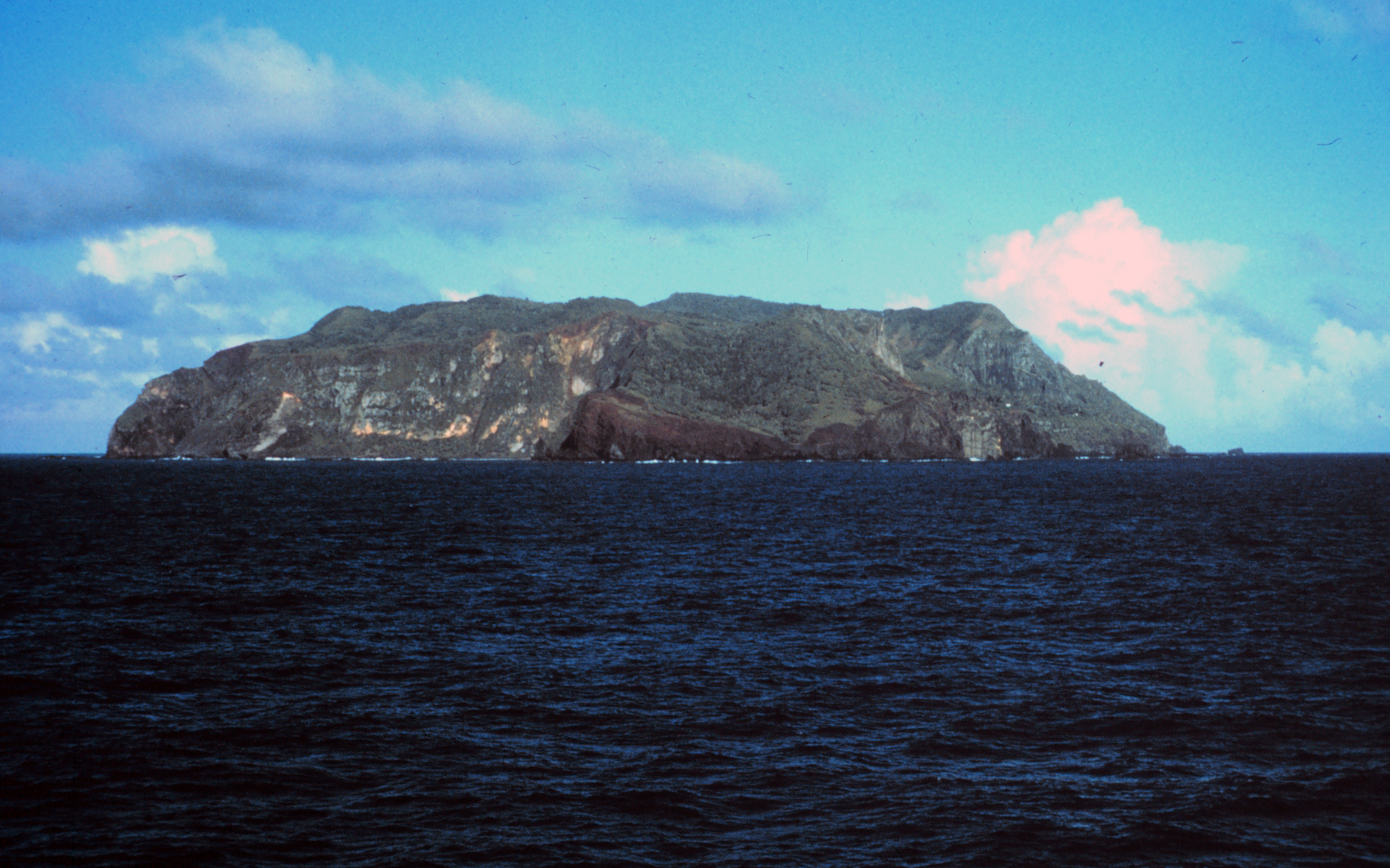Robert Pitcairn (midshipman) on:
[Wikipedia]
[Google]
[Amazon]
Robert Pitcairn (6 May 1752 – ) was a Scottish midshipman in the
 Pitcairn was born in Burntisland, Fife, in 1752. His father,
Pitcairn was born in Burntisland, Fife, in 1752. His father,
 Pitcairn served on HMS ''Emerald'', a 32-gun
Pitcairn served on HMS ''Emerald'', a 32-gun
Royal Navy
The Royal Navy (RN) is the United Kingdom's naval warfare force. Although warships were used by English and Scottish kings from the early medieval period, the first major maritime engagements were fought in the Hundred Years' War against ...
. Pitcairn Island was named after him: he was the first person to spot the island on 2 July 1767 (ship's time
A ship's bell is a bell on a ship that is used for the indication of time as well as other traditional functions. The bell itself is usually made of brass or bronze, and normally has the ship's name engraved or cast on it.
Strikes Timing of s ...
), while serving in a voyage in the South Pacific on , captained by Philip Carteret
Rear-Admiral Philip Carteret, Seigneur of Trinity (22 January 1733, Trinity Manor, Jersey – 21 July 1796, Southampton) was a British naval officer and explorer who participated in two of the Royal Navy's circumnavigation expeditions in 176 ...
.
Early life and family
 Pitcairn was born in Burntisland, Fife, in 1752. His father,
Pitcairn was born in Burntisland, Fife, in 1752. His father, John Pitcairn
Major John Pitcairn (28 December 1722 – 17 June 1775) was a Marine Service officer who was stationed in Boston, Massachusetts, at the start of the American War of Independence.
Born in Scotland in 1722, Pitcairn joined the Naval Service at ...
(1722–75), was a major in the Royal Marines who commanded the British advance party at the Battle of Lexington
The Battles of Lexington and Concord were the first military engagements of the American Revolutionary War. The battles were fought on April 19, 1775, in Middlesex County, Province of Massachusetts Bay, within the towns of Lexington, Concord, ...
that fired the "shot heard round the world
"The Shot Heard 'Round the World" is a phrase that refers to the opening shot of the battles of Lexington and Concord on April 19, 1775, which began the American Revolutionary War and led to the creation of the United States of America. It was an ...
", and died from wounds after the Battle of Bunker Hill in 1775. His paternal grandfather, David Pitcairn, was a clergyman at Dysart, Fife
Dysart ( ; gd, Dìseart) is a former town and royal burgh located on the south-east coast between Kirkcaldy and West Wemyss in Fife. The town is now considered to be a suburb of Kirkcaldy. Dysart was once part of a wider estate owned by the St ...
, and his paternal grandmother Katherine was the daughter of William Hamilton. His mother Elizabeth (1724–1809) was the daughter of Robert Dalrymple. His uncle William Pitcairn (1712–91) was a doctor at St Bartholomew's Hospital
St Bartholomew's Hospital, commonly known as Barts, is a teaching hospital located in the City of London. It was founded in 1123 and is currently run by Barts Health NHS Trust.
History
Early history
Barts was founded in 1123 by Rahere (die ...
in London.
Among his eight siblings (four other sons and four daughters) were:
* His brother David Pitcairn (1749–1809) became a doctor at St Bartholomew's Hospital
St Bartholomew's Hospital, commonly known as Barts, is a teaching hospital located in the City of London. It was founded in 1123 and is currently run by Barts Health NHS Trust.
History
Early history
Barts was founded in 1123 by Rahere (die ...
in London;
* His sister Catherine Pitcairn married Charles Cochrane, a British Army officer. Cochrane died in 1781 shortly after arriving as aide-de-camp to Cornwallis at Yorktown. He was the son of Thomas Cochrane, 8th Earl of Dundonald
Thomas Cochrane, 8th Earl of Dundonald (1691 – 31 October 1778) was a Scottish nobleman, army officer and politician. He was Member of Parliament for Renfrewshire, 1722–1727. He served as Commissioner of the Excise for Scotland from 1730 un ...
, and first cousin of Admiral Thomas Cochrane, 10th Earl of Dundonald
Thomas Cochrane, 10th Earl of Dundonald, Marquess of Maranhão (14 December 1775 – 31 October 1860), styled Lord Cochrane between 1778 and 1831, was a British naval flag officer of the Royal Navy, mercenary and Radical politician. He was a ...
,
* His sister Anne was the mother of Sir John Campbell (1780–1863).
Naval career
 Pitcairn served on HMS ''Emerald'', a 32-gun
Pitcairn served on HMS ''Emerald'', a 32-gun fifth-rate
In the rating system of the Royal Navy used to categorise sailing warships, a fifth rate was the second-smallest class of warships in a hierarchical system of six " ratings" based on size and firepower.
Rating
The rating system in the Royal ...
ship, and then joined in July 1766 as a midshipman (the ship's pay-book listed him as aged 19, but baptismal records show he was only 14). The ship, a 14-gun sixth-rate sloop, sailed under Philip Carteret
Rear-Admiral Philip Carteret, Seigneur of Trinity (22 January 1733, Trinity Manor, Jersey – 21 July 1796, Southampton) was a British naval officer and explorer who participated in two of the Royal Navy's circumnavigation expeditions in 176 ...
on a voyage of exploration in the South Pacific, accompanying commanded by Samuel Wallis
Samuel Wallis (23 April 1728 – 21 January 1795 in London) was a British naval officer and explorer of the Pacific Ocean. He made the first recorded visit by a European navigator to Tahiti.
Biography
Wallis was born at Fenteroon Farm, n ...
. The two ships were parted shortly after sailing through the Strait of Magellan. Carteret took a more southerly route through the Pacific Ocean, and so failed to find much new land, while Wallis took a more northerly route and became the first clearly documented European vessel to land at Tahiti
Tahiti (; Tahitian ; ; previously also known as Otaheite) is the largest island of the Windward group of the Society Islands in French Polynesia. It is located in the central part of the Pacific Ocean and the nearest major landmass is Austra ...
in June 1767.
On Thursday, 2 July 1767 (according to the ship's records; 1 July according to the civil calendar), Pitcairn was the first person on the ''Swallow'' to spot an island in the Pacific. He was just fifteen at this time. The island was described by Carteret as "small high uninhabited island, not above 4 or 5 miles round ... scarce better than a large rock in the Ocean" and was named "Pitcairn's Island" after the midshipman. High volcanic cliffs prevented the voyagers landing on the island. Recorded (erroneously) at a , the incorrect coordinates meant that the island could not be found again by later voyages, but from its description and general location it is considered to be Pitcairn Island, which actually lies further east, at . The 3° longitude error may be explained by Carteret sailing without the benefit of the new marine chronometer
A marine chronometer is a precision timepiece that is carried on a ship and employed in the determination of the ship's position by celestial navigation. It is used to determine longitude by comparing Greenwich Mean Time (GMT), or in the modern ...
.
Pitcairn arrived back in England on the ''Swallow'' in March 1769. He left the ''Swallow'' in May 1769, and joined the East India Company
The East India Company (EIC) was an English, and later British, joint-stock company founded in 1600 and dissolved in 1874. It was formed to trade in the Indian Ocean region, initially with the East Indies (the Indian subcontinent and South ...
ship HMS ''Aurora'', a 32-gun fifth-rate frigate, commanded by Captain Thomas Lee.
Disappearance
He sailed from England on ''Aurora'' in September, and called at the Cape of Good Hope in December 1769. The ship made for the Comoros Islands, but disappeared without trace. It may have been sunk in a tropical storm, or wrecked on the Star Bank off the south coast ofMadagascar
Madagascar (; mg, Madagasikara, ), officially the Republic of Madagascar ( mg, Repoblikan'i Madagasikara, links=no, ; french: République de Madagascar), is an island country in the Indian Ocean, approximately off the coast of East Africa ...
in early 1770.
See also
*List of people who disappeared mysteriously at sea
Throughout history, people have mysteriously disappeared at sea, many on voyages aboard floating vessels or traveling via aircraft. The following is a list of known individuals who have mysteriously vanished in open waters, and whose whereabouts r ...
References
External links
* {{DEFAULTSORT:Pitcairn, Robert 1752 births 1770 deaths 1770s missing person cases History of the Pitcairn Islands People from Burntisland People lost at sea Royal Navy officers